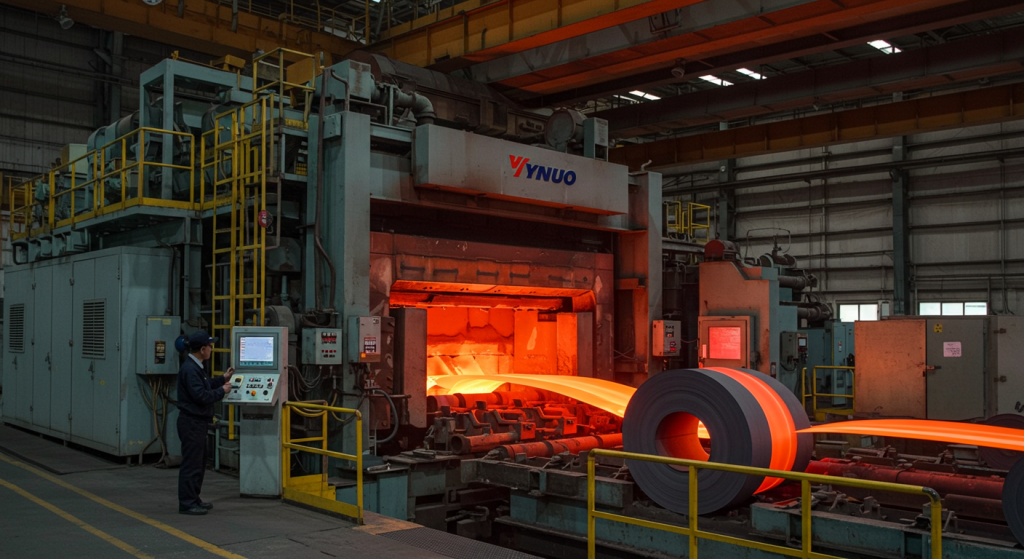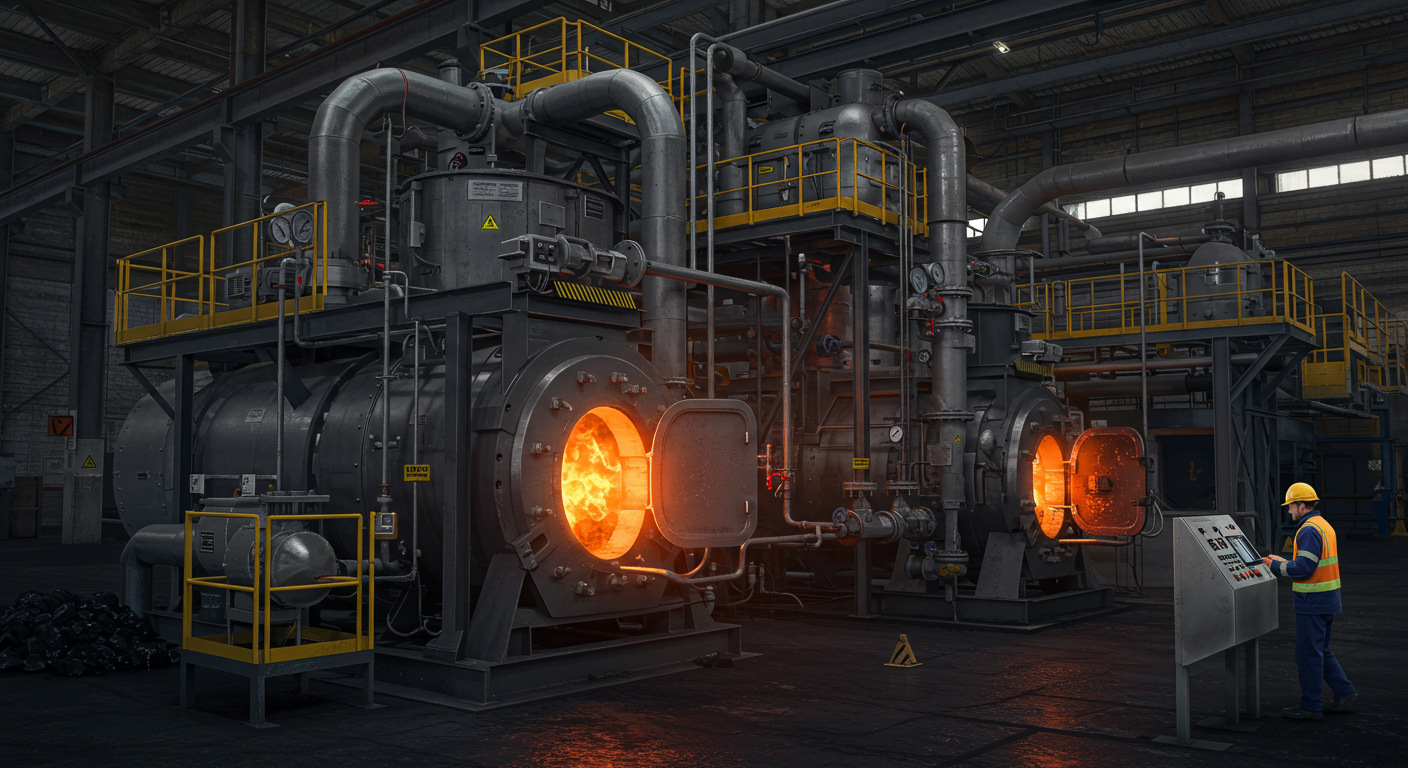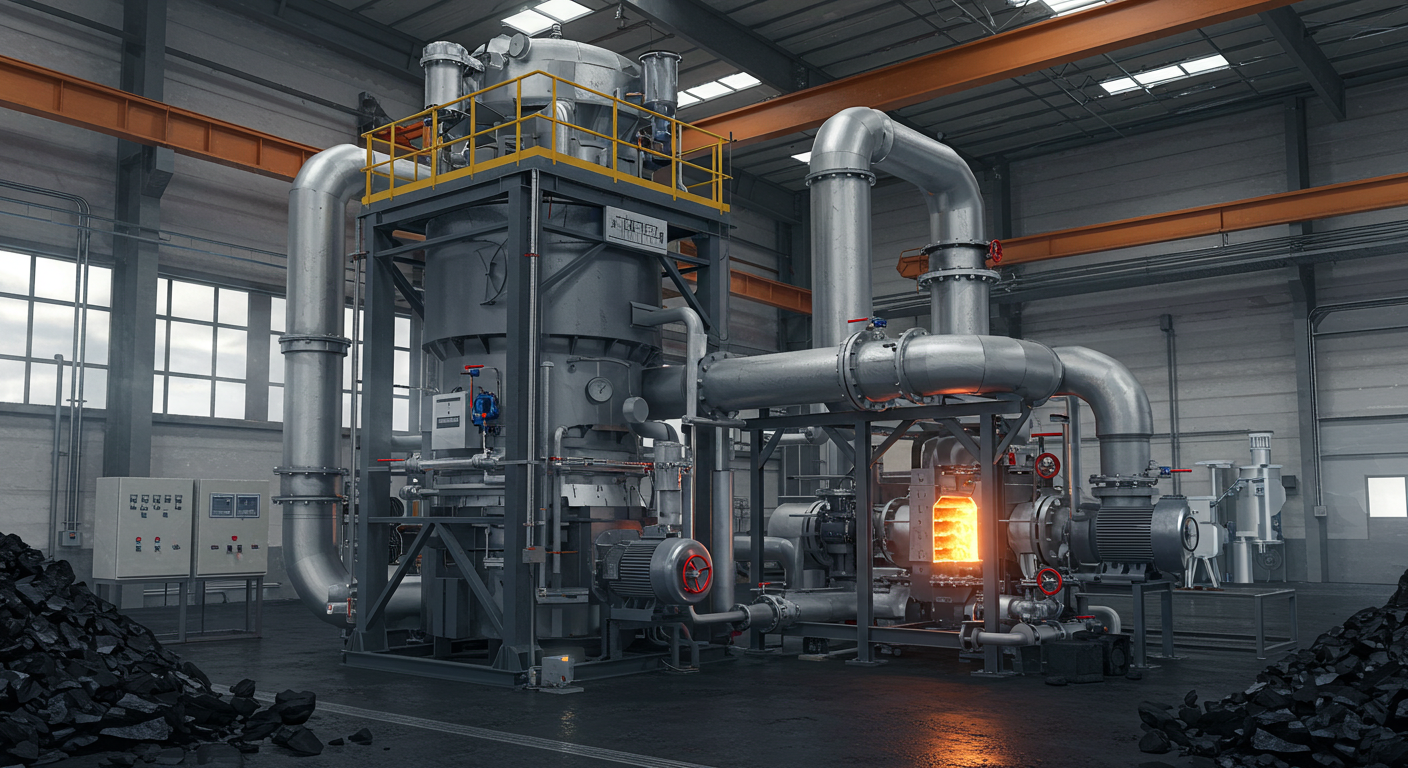
Annealing ovens are pivotal in transforming the physical properties of metals, glass, and ceramics, making them softer, more ductile, and free of internal stresses. At Jiangsu Yinuo Thermal Energy Technology Co., Ltd., we specialize in crafting advanced industrial furnaces, including annealing ovens, that empower industries like steel manufacturing, aerospace, and electronics. These ovens deliver precise heating and cooling to meet stringent material requirements, ensuring high-quality outputs.
This guide examines the technology, applications, and maintenance of annealing ovens, providing valuable insights for engineers, technicians, and industry professionals. With over 13 years of expertise and multiple patents, Yinuo’s annealing ovens are designed for efficiency and durability. Learn how to optimize these systems and explore our solutions at Our Products. Let’s uncover the science and strategy behind annealing ovens to elevate your industrial processes.
What Is an Annealing Oven?
An annealing oven is a specialized industrial furnace designed to heat materials to a specific temperature, hold them for a set period, and cool them slowly to alter their microstructure. This process reduces hardness, enhances ductility, and relieves stresses from prior manufacturing steps like forging, rolling, or machining. Unlike general-purpose furnaces, annealing ovens prioritize precise temperature control, uniform heating, and controlled cooling, typically operating between 200°C and 1200°C, depending on the material.
Yinuo’s annealing ovens come in various configurations, including batch and continuous models. Batch ovens, such as trolley-type systems, process fixed loads, ideal for custom or small-scale jobs. Continuous ovens, like roller hearth designs, support high-volume production, feeding materials through a conveyor for seamless processing. Heating sources include electric elements, gas burners, or induction systems, each tailored to specific applications. For instance, electric ovens offer precision for electronics, while gas-fired models are cost-effective for steel processing.
These ovens are critical in industries requiring material refinement, such as softening steel for rolling or annealing glass to prevent cracking. To explore our range of annealing ovens, visit Our Furnace Products. Proper design and maintenance ensure these systems deliver consistent results, making them indispensable for modern manufacturing.
How Annealing Ovens Work
The annealing process involves three key stages: heating, soaking, and cooling. During heating, materials are raised to a target temperature—500–900°C for steel, 300–600°C for glass—to initiate microstructural changes. The soaking phase maintains this temperature, allowing recrystallization in metals or stress relaxation in glass, typically for minutes to hours. Cooling, often at 5–50°C per hour, prevents new stresses, ensuring material stability.
Yinuo’s annealing ovens use advanced control systems to manage these stages. Thermocouples monitor temperature, while programmable logic controllers (PLCs) automate heating and cooling rates. Electric ovens employ resistance elements for precise heat, while gas-fired ovens use burners, sometimes with regenerative technology for efficiency, as detailed in our Regenerative Burner Technology Guide. Continuous ovens feature conveyors or rollers for smooth material flow, while batch ovens use fixed chambers or trolleys.
Atmosphere control is crucial, especially for metals like stainless steel or titanium. Inert gases like nitrogen or hydrogen prevent oxidation, ensuring material purity. Yinuo’s ovens integrate these systems for reliability, as seen in our Heat Treatment Solutions Guide. Regular maintenance, including burner and sensor checks, ensures optimal performance. For custom furnace solutions, contact us at Contact Us.
Types of Annealing Ovens
Annealing ovens vary by design, heat source, and application, each tailored to specific industrial needs:
Batch Annealing Ovens
Batch ovens process materials in fixed loads, ideal for small-scale or specialized tasks. Trolley-type ovens, where materials are loaded on movable carts, are common in tool manufacturing or custom alloy processing. They offer flexibility but are slower than continuous systems.
Continuous Annealing Ovens
Built for high-volume production, continuous ovens feed materials through conveyors or rollers. Roller hearth ovens, for example, anneal steel coils or sheets in steel mills, ensuring uniform heating and high throughput. These are perfect for automotive or construction industries.
Gas-Fired Annealing Ovens
Using natural gas or propane, these ovens are cost-effective for large-scale operations, such as annealing steel plates. Yinuo’s gas-fired models often incorporate regenerative burners, reducing fuel use by up to 50%, as explored in our Gas-Fired Furnace Guide.
Electric Annealing Ovens
Electric ovens use resistance heating for precise control, ideal for delicate materials like glass or electronic components. They’re cleaner but may have higher operating costs, making them suitable for laboratories or high-tech industries.
Atmosphere-Controlled Annealing Ovens
These ovens use inert or controlled atmospheres to prevent oxidation, critical for aerospace alloys or stainless steel. Nitrogen or hydrogen atmospheres ensure material purity, as discussed in our Atmosphere-Controlled Furnaces Guide.
Yinuo’s annealing ovens are engineered for durability and efficiency, with options to suit various industries. Explore our offerings at Our Furnace Products.
Applications of Annealing Ovens
Annealing ovens serve a wide range of industries, each leveraging the process to enhance material properties:
Steel Manufacturing
Annealing ovens soften steel coils, sheets, or wires for rolling, stamping, or forming. Continuous ovens streamline high-volume production, while batch ovens handle specialty alloys. This improves ductility for automotive or construction components, as covered in our Steel Processing Furnaces Guide.
Aerospace
Aerospace components, such as titanium or aluminum alloys, undergo annealing to relieve stresses from forging or machining. Atmosphere-controlled ovens ensure purity for turbine blades or structural parts, meeting stringent standards.
Electronics
Wire annealing ovens soften copper or aluminum wires to enhance conductivity, used in cables or circuit boards. Electric ovens provide precision for delicate components, ensuring reliability in high-tech applications.
Glass Manufacturing
Glass annealing ovens cool molten glass slowly to prevent cracking, essential for bottles, windows, or optical lenses. Controlled cooling ensures structural integrity, critical for consumer and industrial products.
Automotive
Annealing ovens process steel or aluminum parts, like engine components or body panels, improving formability. Gas-fired ovens reduce costs for large-scale production, while continuous systems boost efficiency.
Ceramics and Specialty Materials
Ceramic annealing strengthens tiles or insulators, while specialty ovens treat materials like composites for advanced applications. These require precise temperature control, often via electric systems.
For industry-specific furnace solutions, visit Our Services. Yinuo’s annealing ovens are tailored to meet diverse needs, ensuring high-quality results.
Benefits of Annealing Ovens
Annealing ovens offer significant advantages, making them essential for industrial processes:
Enhanced Material Properties
Annealing reduces hardness and increases ductility, enabling complex shaping without cracking. For example, annealed steel is ideal for automotive body panels.
Stress Relief
The process eliminates stresses from prior manufacturing, preventing warping or failure in components like aerospace airframes.
Improved Durability
Annealed materials resist fatigue, extending part life in demanding applications like construction or heavy machinery.
Versatility
Ovens process metals, glass, ceramics, and composites, serving industries from steel mills to electronics.
Energy Efficiency
Yinuo’s gas-fired ovens with regenerative burners cut fuel use, while electric models optimize power consumption, as noted in our Regenerative Burner Technology Guide.
Precision and Consistency
Advanced PLCs and thermocouples ensure uniform heating and cooling, critical for high-quality outputs in aerospace or electronics.
These benefits rely on proper maintenance and quality equipment, available at Our Furnace Products.
Common Challenges with Annealing Ovens
Annealing ovens face challenges that can impact performance if not addressed:
Temperature Inconsistency
Faulty thermocouples or poor insulation cause uneven heating, affecting material quality. Regular calibration and insulation checks are necessary.
Oxidation
Without atmosphere control, metals oxidize, degrading properties. Inert gas systems in Yinuo’s ovens mitigate this, as detailed in our Atmosphere-Controlled Furnaces Guide.
Energy Costs
Gas-fired ovens consume significant fuel, and electric ovens have high electricity costs. Regenerative burners and efficient designs reduce expenses.
Component Wear
Burners, rollers, or conveyors degrade, especially in continuous ovens. Scheduled maintenance extends component life.
Control System Failures
PLC or sensor malfunctions disrupt temperature control. Yinuo’s ovens include robust systems, but regular testing is critical.
Scale Buildup
Material residues in the oven chamber affect performance, particularly in steel processing. Regular cleaning prevents issues.
Addressing these challenges ensures reliable operation. For maintenance support, explore Our Services.
Maintenance Strategies for Annealing Ovens
Effective maintenance maximizes annealing oven performance and longevity. Yinuo’s ovens are built for durability, but these strategies ensure optimal operation:
Regular Inspections
Inspect ovens every 1,000 hours:
- Check burners or heating elements for wear.
- Verify thermocouple accuracy with a calibrated meter.
- Inspect insulation for cracks.
- Monitor gas and electrical connections for safety.
Atmosphere System Maintenance
For atmosphere-controlled ovens:
- Test gas delivery systems for leaks.
- Monitor gas purity to prevent oxidation.
- Calibrate flow meters monthly.
Burner and Heating System Care
For gas-fired ovens:
- Clean burner nozzles to prevent clogging.
- Calibrate regenerative burners for efficiency, per our Regenerative Burner Technology Guide.
- For electric ovens, inspect heating elements for corrosion.
Temperature Calibration
Ensure uniform heating:
- Use thermocouples to verify zone temperatures.
- Adjust PLC settings for precise control.
- Test cooling rates to match material needs.
Component Cleaning
Maintain a clean chamber:
- Remove scale or debris weekly, especially in continuous ovens.
- Clean rollers or conveyors to prevent jams.
Fan and Motor Maintenance
Check air circulation systems:
Scheduled Downtime
Plan maintenance during low-production periods. Log inspection results, repairs, and component replacements to track performance.
For professional maintenance services, contact us at Our Services. Yinuo’s engineers ensure your ovens operate at peak efficiency.
Optimizing Annealing Oven Performance
To enhance efficiency and output, consider these optimization strategies:
Energy Efficiency
Incorporate regenerative burners to recover waste heat, reducing fuel use by 30–50%. Yinuo’s gas-fired ovens feature this technology, as noted in our Gas-Fired Furnace Guide.
Automation
Use PLC-based SCADA systems for real-time monitoring, minimizing human error. Yinuo’s ovens support automation, improving consistency.
Atmosphere Optimization
Adjust gas compositions (e.g., nitrogen-hydrogen blends) to suit materials, reducing oxidation and costs, per our Atmosphere-Controlled Furnaces Guide.
Process Tuning
Optimize heating and cooling rates for specific materials. For steel, a slower cooling rate (10°C/hour) enhances ductility, while glass may require faster cycles.
Component Upgrades
Replace outdated burners or sensors with Yinuo’s advanced components, available at Our Furnace Products.
Operator Training
Train staff on oven operation and maintenance, ensuring best practices. Yinuo offers training, detailed in Our Services.
These strategies boost performance and reduce costs, keeping your operations competitive.
Choosing the Right Annealing Oven
Selecting an annealing oven requires evaluating your needs:
- Material: Steel needs 700–900°C; glass requires 300–600°C.
- Production Volume: Continuous ovens for high throughput; batch for small runs.
- Heat Source: Gas-fired for cost; electric for precision.
- Atmosphere: Inert gases for sensitive materials.
- Budget: Balance initial cost with energy efficiency.
Yinuo’s ovens, from compact batch models to large continuous systems, meet diverse requirements. Explore options at Our Furnace Products or consult our team at Contact Us.
Future Trends in Annealing Oven Technology
Annealing ovens are evolving to meet industry demands:
- Automation: IoT-enabled sensors and SCADA systems enhance control, reducing errors.
- Energy Efficiency: Regenerative burners and low-emission designs cut costs and emissions.
- Compact Designs: Smaller ovens for labs or artisanal use, like wire annealing systems.
- Smart Maintenance: Predictive analytics monitor component health, minimizing downtime.
- Sustainability: Electric ovens and green fuels align with environmental goals.
Yinuo leads these innovations, with patented technologies ensuring cutting-edge performance. Stay ahead with our solutions at Our Furnace Products.
Conclusion
Annealing ovens are essential for refining materials in steel, aerospace, electronics, and glass industries, delivering softer, stress-free, and durable products. Jiangsu Yinuo’s annealing ovens, backed by over 13 years of expertise and multiple patents, offer precision, efficiency, and versatility. From batch trolley ovens to continuous roller hearth systems, our gas-fired and electric models meet diverse needs. Maintenance—inspections, atmosphere control, and component care—ensures longevity, while optimization strategies like regenerative burners and automation boost performance. By selecting the right oven and leveraging Yinuo’s solutions, you achieve high-quality results and cost savings.
Explore our range of annealing ovens and related furnaces at Our Furnace Products. Need tailored advice or maintenance support? Visit Our Services or Contact Us to connect with our expert engineers. With Yinuo, your industrial processes are powered by innovation and reliability.
FAQ
What materials can an annealing oven process?
Metals (steel, aluminum), glass, and ceramics, with temperatures tailored to each.
How do gas-fired and electric annealing ovens differ?
Gas-fired ovens are cost-effective for large-scale use; electric ovens offer precision for delicate materials.
How often should I maintain my annealing oven?
Inspect every 1,000 hours, checking burners, sensors, and insulation, per our Heat Treatment Solutions Guide.
What improves energy efficiency in annealing ovens?
Regenerative burners reduce fuel use, as detailed in our Regenerative Burner Technology Guide.
How can I choose the right annealing oven?
Consider material, volume, and budget. Contact Yinuo at Contact Us for expert guidance







